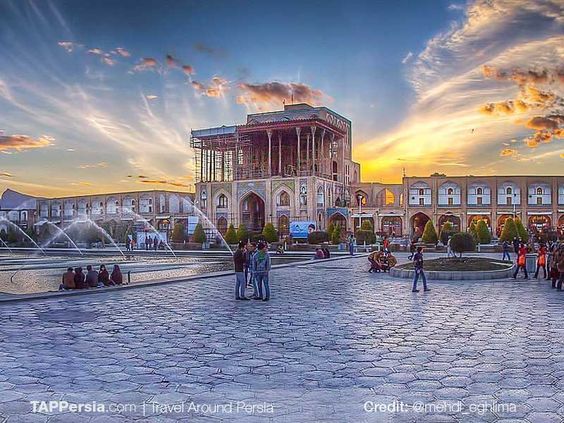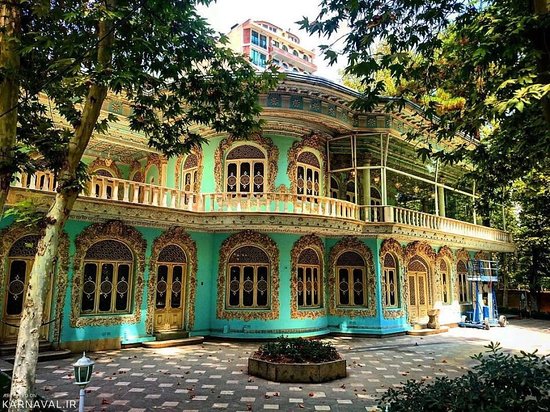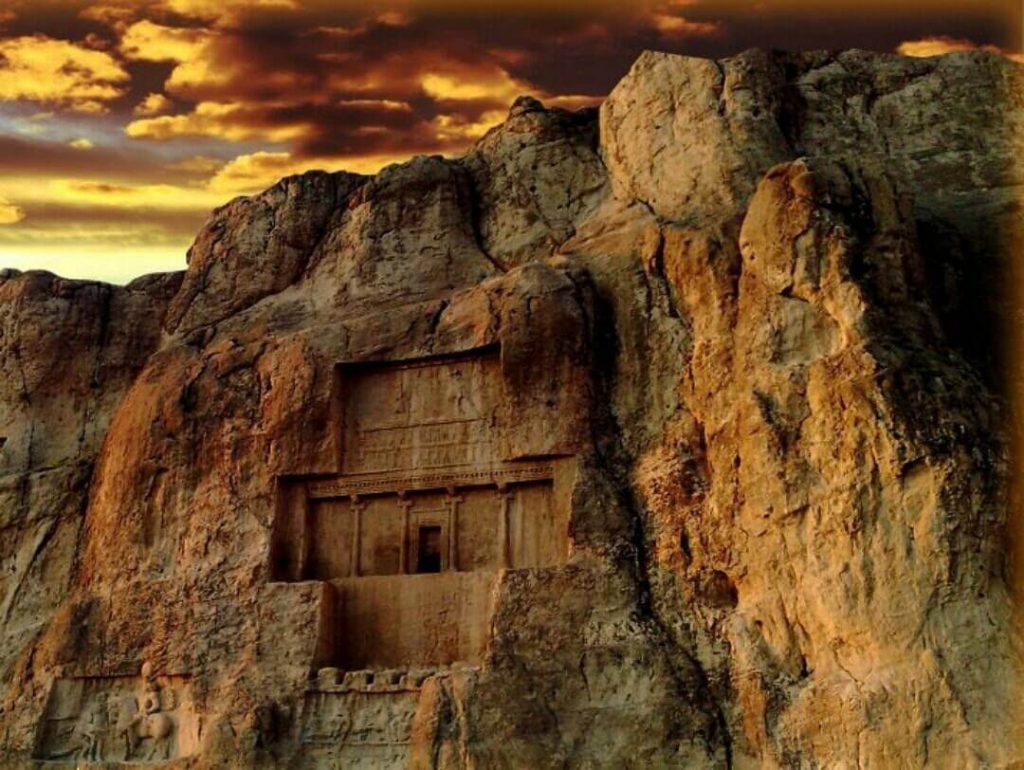
About Yazd
Yazd is a beautiful desert city located in central Iran. It is known for its unique architecture, delicious cuisine, and friendly people. Here's a travel guide to help you plan your visit. Getting there: its own airport, but it's mostly used for domestic flights. The most common way to get to Yazd is by bus or train from other major cities in Iran, such as Tehran or Isfahan. Accommodation: There are plenty of hotels and guesthouses, ranging from budget to luxury. Most of them are located in or around the Old Town, which is the best area to stay in if you want to be close to the main attractions.
Things to see and do:
Jameh Mosque: This is one of the oldest and most important mosques in Iran, dating back to the 12th century.
Amir Chakhmaq Complex: This is a beautiful complex with a mosque, a caravanserai, and a bazaar.
Atash Behram: This is a Zoroastrian temple and one of the nine Atash Behrams in Iran. It’s a must-visit for anyone interested in Zoroastrianism.
Old Town: The historic center of Yazd is a UNESCO World Heritage site, with narrow alleys, traditional houses, and wind towers that cool the houses in the hot desert climate.
Dowlat Abad Garden: This is a beautiful Persian garden with a 33-meter-tall wind tower and a mansion that dates back to the 18th century.
Bazaars: Yazd has several bazaars where you can shop for local handicrafts, spices, and sweets.
Food and drink: Yazd is known for its delicious cuisine, including ash-e reshteh (a thick soup with noodles, beans, and herbs), fesenjan (a chicken or meat stew with pomegranate and walnuts), and qottab (a sweet pastry filled with nuts and spices). You should also try Yazd’s famous sweets, such as baghlava and qurabiya.
Climate: Yazd has a desert climate, with hot summers and cool winters. The best time to visit is in the spring or fall, when the weather is milder.
Local customs: Yazd is a conservative city, so it’s important to dress modestly and respect local customs. Women should cover their hair and wear loose-fitting clothes that cover their arms and legs. Alcohol is not widely available in Yazd, but you can find it in some hotels and restaurants that cater to tourists.
Getting around: The best way to explore Yazd is on foot or by bicycle. Taxis and buses are also available, but they can be crowded and uncomfortable.
Yazd is a beautiful and unique city that is definitely worth a visit if you’re in Iran. Make sure to explore the Old Town, try the local cuisine, and learn about the city’s rich history and culture.
Why visit Yazd?
There are many reasons to visit Yazd, including:
Unique architecture: Yazd is known for its unique architecture, with traditional houses, wind towers, and adobe walls that keep the houses cool in the hot desert climate.
Rich history and culture: Yazd has a rich history and culture that dates back to ancient times. It has been an important center of Zoroastrianism, Islam, and Persian culture.
Delicious cuisine: Yazd is known for its delicious cuisine, which includes traditional Persian dishes as well as local specialties such as qottab and baghlava.
UNESCO World Heritage site: The Old Town of Yazd is a UNESCO World Heritage site, with narrow alleys, historic buildings, and traditional bazaars that have been preserved for centuries.
Friendly people: The people of Yazd are known for their hospitality and friendliness, and visitors to the city are often welcomed with open arms.
Central location: Yazd is located in central Iran, making it a convenient stopover for travelers who are exploring other parts of the country.
Overall, Yazd offers a unique and authentic experience that is not to be missed. Whether you’re interested in history, culture, food, or just soaking up the atmosphere of a beautiful desert city, Yazd has something for everyone.
Culture of Yazd
Yazd has a rich and diverse culture that reflects its long history as an important center of Persian civilization and Islamic culture. The city has also been home to a significant Zoroastrian community, which has had a major influence on its culture and traditions.
Here are some aspects of the culture of Yazd:
Architecture: Yazd is known for its unique architecture, which includes traditional houses, wind towers, and adobe walls that keep the houses cool in the hot desert climate. The Old Town of Yazd has been designated a UNESCO World Heritage site for its historic architecture and urban design.
Religion: Yazd has a diverse religious heritage, with significant Muslim and Zoroastrian communities. The city is home to several important Islamic monuments, including the Jameh Mosque, while the Zoroastrian temple of Yazd Atash Behram is one of the most important sites of the Zoroastrian faith.
Food: Yazd has a rich culinary tradition, with a range of delicious dishes that reflect the city’s Persian and Central Asian heritage. Local specialties include fesenjan (a chicken or meat stew with pomegranate and walnuts), ash-e reshteh (a thick soup with noodles, beans, and herbs), and various sweets such as qottab and baghlava.
Handicrafts: Yazd is known for its traditional handicrafts, including textiles, ceramics, and metalwork. The city’s bazaars are a great place to find local handicrafts and souvenirs.
Festivals: Yazd hosts several important festivals and celebrations throughout the year, including the Nowruz (Persian New Year) and the Ashura mourning ceremonies. The city’s Zoroastrian community also celebrates several important festivals, including Mehregan and Sadeh.
Hospitality: The people of Yazd are known for their hospitality and friendliness towards visitors. It’s common for visitors to be invited into people’s homes for tea and conversation, and visitors are often welcomed with open arms.
Overall, the culture of Yazd is a fascinating mix of Persian, Islamic, and Zoroastrian traditions, with a rich history and a vibrant present. Whether you’re interested in architecture, religion, food, or just experiencing the warmth and hospitality of the local people, Yazd has something to offer.
History and ages of Yazd
Yazd has a long and rich history that dates back to ancient times. The city has been an important center of Persian civilization, Islamic culture, and Zoroastrianism, and has played a significant role in the development of Central Asia.
Here is a brief overview of the history and ages of Yazd:
pre-Islamic period: Yazd was an important center of the Achaemenid Empire (550-330 BCE), which was the first Persian empire. The city was also home to a significant Zoroastrian community, which was the dominant religion of Persia before the arrival of Islam.
Islamic period: Yazd became an important center of Islamic culture and learning after the Arab conquest of Persia in the 7th century CE. The city was a center of Sufi mysticism, and several important Sufi poets and philosophers lived and worked in Yazd.
Seljuk period: The Seljuk Empire (1037-1194 CE) was a major Islamic empire that ruled over much of Central Asia and the Middle East. Yazd was an important center of Seljuk culture and architecture, and many of the city’s most important Islamic monuments date from this period.
Safavid period: The Safavid dynasty (1501-1736 CE) was one of the most important dynasties in Persian history. Yazd was an important center of Safavid culture and trade, and the city’s bazaars and caravanserais were a hub of activity during this period.
Qajar period: The Qajar dynasty (1785-1925 CE) was the last Persian dynasty before the modern era. Yazd was an important center of Qajar culture and architecture, and many of the city’s most beautiful buildings date from this period.
Modern period: Yazd has played an important role in the development of modern Iran, particularly in the areas of industry and commerce. The city has also become an important center of tourism, with visitors coming from around the world to experience its unique culture and architecture.
Overall, Yazd has a rich and diverse history that reflects its central location in the heart of Central Asia. From its ancient Zoroastrian roots to its modern role as a hub of industry and tourism, Yazd has played an important role in the development of Persian culture and civilization.
The food in Yazd
Yazd has a rich culinary tradition, with a range of delicious dishes that reflect the city’s Persian and Central Asian heritage. The food in Yazd is known for its unique blend of flavors, which are often a combination of sweet and savory, and its use of local ingredients such as pomegranate, saffron, and pistachios.
Here are some popular dishes you should try when visiting Yazd:
Fesenjan: A chicken or meat stew with a rich, tangy sauce made from pomegranate juice and ground walnuts. Fesenjan is often served with rice and is a popular dish for special occasions.
Ash-e Reshteh: A thick soup made with noodles, beans, and a variety of herbs. Ash-e Reshteh is often served as a main course and is especially popular during the winter months.
Gheymeh Nesar: A hearty meat and vegetable stew made with lamb, split peas, and saffron. Gheymeh Nesar is often served with rice and is a popular dish for lunch or dinner.
Baghlava: A sweet pastry made with layers of phyllo dough and honey syrup, and topped with pistachios. Baghlava is a popular dessert in Yazd and is often served with tea or coffee.
Qottab: A sweet pastry filled with walnuts, cardamom, and rosewater. Qottab is a popular dessert in Yazd and is often served during special occasions such as weddings and festivals.
Halim Bademjan: A savory eggplant and lentil stew, flavored with turmeric and served with bread. Halim Bademjan is a popular vegetarian dish in Yazd and is often served as a main course.
These are just a few of the many delicious dishes you can try when visiting Yazd. With its rich culinary tradition and unique blend of flavors, Yazd is a food lover’s paradise!
The weather of Yazd
this city is located in the center of Iran and has a desert climate, which means it is hot and dry for most of the year. The summers in Yazd are extremely hot, with temperatures often reaching 40°C (104°F) or higher. The winters, on the other hand, are cool and sometimes even cold, with temperatures dropping to around freezing point at night.
The best time to visit Yazd is during the spring and fall, when the temperatures are more moderate and the weather is pleasant for outdoor activities. During these seasons, the temperatures are usually around 20-25°C (68-77°F) during the day and around 10-15°C (50-59°F) at night.
It’s important to note that the desert climate of Yazd means that the weather can be unpredictable at times, with occasional sandstorms and strong winds. Visitors to Yazd should come prepared for the weather, with appropriate clothing and plenty of sunscreen and water during the hot summer months.
All travel attractions of Yazd
This city is a beautiful and historic city in Iran, with a rich cultural heritage and many fascinating attractions to explore. Here are some of the top travel attractions of Yazd:
Jameh Mosque of Yazd: The Jameh Mosque of Yazd is one of the oldest and most beautiful mosques in Iran, dating back to the 14th century. The mosque is known for its stunning blue-tiled minarets and intricate brickwork.
Yazd Atash Behram: The Yazd Atash Behram is one of the nine Zoroastrian fire temples in Iran and is considered one of the holiest sites for Zoroastrians. The temple houses an eternal flame that has been burning for over 1,500 years.
Amir Chakhmaq Complex: The Amir Chakhmaq Complex is a beautiful and historic complex in the center of Yazd, with a large square, a mosque, and several other buildings. The complex is known for its stunning facade, which is covered in intricate tilework.
Dolat Abad Garden: The Dolat Abad Garden is a beautiful Persian garden in Yazd, with a large central pool and several pavilions and buildings. The garden is known for its beautiful architecture and is a popular spot for picnics and relaxation.
Water Museum: The Water Museum in Yazd is a unique museum that showcases the city’s traditional methods of water management. The museum features exhibits on qanats (underground aqueducts), water wheels, and other traditional water systems.
Dowlatshahi Historic House: The Dowlatshahi Historic House is a beautiful traditional Persian house in Yazd, dating back to the 18th century. The house features stunning tilework, a central courtyard, and several beautifully decorated rooms.
Zoroastrian Cemetery: The Zoroastrian Cemetery in Yazd is a unique and fascinating attraction, with rows of “towers of silence” where Zoroastrians used to leave their dead to be exposed to the elements. Although the towers are no longer in use, the cemetery is a beautiful and peaceful place to explore.
These are just a few of the many travel attractions of Yazd. With its rich history, beautiful architecture, and unique cultural heritage, Yazd is a must-visit destination for anyone traveling to Iran.
More places
Bazaar: The Yazd Bazaar is a historic marketplace in the center of the city, with winding alleys, beautiful architecture, and a wide range of shops selling everything from spices to textiles.
Alexander’s Prison: Alexander’s Prison is a historic building in Yazd that was once a prison. The building now houses a museum showcasing the history of Yazd and its traditional crafts, including carpet weaving and pottery.
Chak Chak: Chak Chak is a Zoroastrian pilgrimage site located just outside of Yazd. The site features a stunning cliffside shrine where Zoroastrians come to pay their respects to the goddess Anahita.
Kharanaq Village: Kharanaq is a traditional village located just outside of Yazd, known for its historic mud brick buildings and traditional architecture. Visitors can explore the village’s narrow alleys, traditional houses, and beautiful mosque.
Fahadan Quarter: The Fahadan Quarter is a historic neighborhood in Yazd, dating back to the 14th century. The neighborhood features winding alleys, traditional houses, and several historic buildings, including the Khan-e Lari House and the Hammam-e Khan.
Zoroastrian Fire Temple: The Zoroastrian Fire Temple in Yazd is another important site for Zoroastrians, housing a flame that has been burning for over 1,500 years. The temple is known for its beautiful architecture and peaceful atmosphere.
Tower of Silence: The Tower of Silence is a historic site located just outside of Yazd, where Zoroastrians used to leave their dead to be exposed to the elements. The site features several circular structures where the bodies were placed, as well as stunning views of the surrounding desert.
These are just a few more places to visit in Yazd. Whether you’re interested in history, architecture, or culture, Yazd has something for everyone to enjoy.
Famous restaurant of Yazd
Yazd is famous for its traditional Persian cuisine, which features a wide range of delicious dishes and flavors. Here are a few famous restaurants in Yazd where you can sample some of the city’s best food:
Heidar BaBa: Heidar BaBa is a popular restaurant in Yazd, known for its delicious kebabs and traditional Persian dishes. The restaurant is located in the historic Fahadan neighborhood and has a beautiful courtyard and indoor seating area.
Termeh Restaurant: Termeh Restaurant is another popular restaurant in Yazd, known for its delicious traditional Persian cuisine and beautiful atmosphere. The restaurant is located in a traditional Persian house and features a beautiful courtyard and rooftop seating area.
Haj Khalifeh Ali Rahbar: Haj Khalifeh Ali Rahbar is a famous sweet shop in Yazd, known for its delicious traditional Persian sweets and pastries. The shop has been in business for over 200 years and is a must-visit destination for anyone with a sweet tooth.
Shirkouhi House Restaurant: Shirkouhi House Restaurant is a beautiful traditional Persian house in Yazd that has been converted into a restaurant. The restaurant serves a wide range of traditional Persian dishes, including stews, kebabs, and vegetarian options.
Gol-e Sorkh Restaurant: Gol-e Sorkh Restaurant is a popular restaurant in Yazd, known for its delicious traditional Persian dishes and beautiful atmosphere. The restaurant is located in a traditional Persian house and features a beautiful courtyard and indoor seating area.
These are just a few of the famous restaurants in this city. With its rich culinary heritage and delicious traditional Persian cuisine, Yazd is a great destination for food lovers.
At the end
Thank you for using my services to learn more about Yazd. I hope I was able to provide you with useful information about the city, its culture, history, food, weather, and attractions. If you have any more questions, please feel free to ask!

I had a wonderful time! I love mountains. I had very much time spent on preparing to my first mountain climb. I loved how trainers and instructors helped me and the other guys from my group. There were neither difficulties nor problems. I got memorable impressions and I will come back!

I’m an experienced climber and I went to an expedition with my friends. I loved friendly atmosphere and professional attitude of our instructors. We climbed the mountain effortlessly and everybody were happy! This sport is for adventurous and brave people. Thanks for awesome time!



